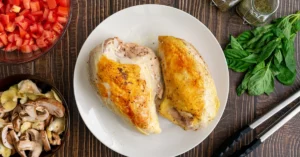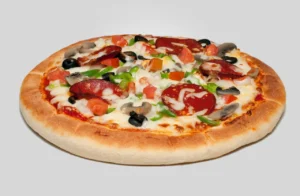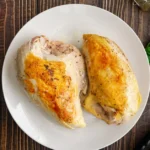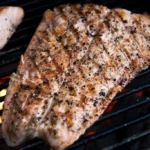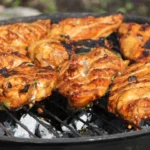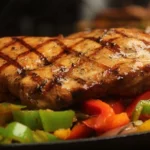You need to measure the butter or your recipe, but you don’t have a measuring cup but tablespoons? You can use tablespoons to convert 1/2 cup of butter into tablespoons.
In this blog post, you’ll know how many tablespoons are in ½ cup of butter. I’ve done all math for you.
Let’s get into the easiest way to measure butter in tablespoons!
Understanding Kitchen Measurements of Cups and Tablespoons
Before converting ½ cup of butter into tablespoons, it’s important to know how both measurements compare.
Cups and tablespoons are used for measuring the dry or liquid ingredients’ volume. Instead of weighing the ingredients, which can be more complicated, measuring them through volume is easy.
A tablespoon is the 16th part of a cup, which means 1 cup = 16 tablespoons.
No matter what the state of an ingredient is, if the recipe specifies it in volume units, you can convert it to another unit of volume without caring about the weight, etc.
So, How many tablespoons are in ½ cup of butter?
To convert ½ cup of butter to tablespoons, we need to determine the conversion factor between these units. Here’s how we can break it down:
1 cup of butter = 16 tablespoons
½ cup = 12/2 tablespoons
Hence, ½ cup of butter = 8 tablespoons.
How easy!
More about Converting ½ Cup of Butter into Tablespoons
Still, some confusion is there, for instance:
- Can you measure melted butter with cups and tablespoons?
- How should you measure solid butter?
- Does your recipe specify the butter state or not?
So, in the next sections of this article, you’re going to get answers to such intriguing questions.
Can you measure melted butter with cups and tablespoons?
Yes, you can measure melted butter using cups and tablespoons. Here is a general guideline for measuring melted butter:
- Cups: Melted butter can be measured in cups by using a liquid measuring cup. One cup of melted butter equals 16 tablespoons or 8 fluid ounces.
- Tablespoons: If you prefer to measure melted butter in tablespoons, you can use a tablespoon measuring spoon. One tablespoon of melted butter is equal to 0.5 fluid ounces or 14.79 milliliters.
How should you measure solid butter?
To measure solid butter, you can use the following methods:
Cups and tablespoons
Butter sticks often have tablespoon measurements indicated for convenience. A regular stick of butter corresponds to 1/2 cup or 8 tablespoons. If you require a different quantity, you can adjust the butter by cutting it as needed. For instance, if you want to measure 1/2 cup of butter in tablespoons, you can divide a standard stick into 8 equal portions.
Ounces
One standard stick of butter weighs 4 ounces or 113 grams. If your recipe requires ounces as the measurement, it’s best to use a kitchen scale.
When measuring solid butter, it’s essential to use proper measuring tools and techniques for accuracy. Make sure to remove any packaging or wrappers from the butter before measuring.
How to measure butter if the recipe doesn’t specify the butter state?
If a recipe doesn’t specify the state of the butter (solid or melted), you can typically assume that it refers to solid butter unless otherwise indicated. In such cases, you can follow these steps to measure the solid butter:
Consult the recipe again
Check the recipe for any specific instructions regarding butter measurement. Some recipes may explicitly mention melted or softened butter. Here, you would need to adjust your measurement accordingly.
Use a kitchen scale
When measuring solid butter, using a kitchen scale provides the highest level of accuracy. Begin by placing a bowl or container on the scale and resetting it to zero. Proceed to add the required quantity of solid butter until the weight matches the specified amount stated in the recipe.
Use measuring spoons or cups.
If you don’t have a scale, you can use measuring spoons or cups to measure solid butter. If the recipe specifies tablespoons or cups of butter, you can follow the standard measurements provided earlier. And, if the recipe only mentions “butter,” you can assume it refers to solid butter and use measuring spoons or cups accordingly.
Remember, if the recipe doesn’t specify the butter state, it’s generally safer to assume solid butter unless your wisdom advises you vice versa.
FAQs
How should you measure frozen butter?
Measuring frozen butter is more challenging than measuring solid or melted butter. To measure frozen butter, grate it using a cheese grater or box grater to create small, measurable pieces. Pack the grated butter into a measuring cup or spoon, removing air pockets for accuracy. Level off the excess butter with a straight edge. Note that frozen butter is denser and harder to work with.
If the recipe calls for softened butter, you can allow the grated butter to naturally reach room temperature or expedite the softening process by cutting it into smaller pieces. It is important to review the recipe for any specific guidelines on measuring frozen butter, as distinct approaches may be necessary.
OR
- Use a kitchen scale to weigh the frozen butter.
- Convert the weight of the frozen butter to volume using the following conversion chart:
| Volume in milliliters | Volume in mililitler |
| 113 g | 100 ml |
| 142 g | 120 ml |
| 170 g | 140 ml |
| 198 g | 160 ml |
How many tablespoons are there in 1 ¼ cup of butter?
There are 20 tablespoons in 1 ¼ cup of butter.
How many tablespoons are there in ⅛ cup of butter?
There are 2 tablespoons in ⅛ cup of butter.
How many tablespoons are there in ⅜ cup of butter?
There are 6 tablespoons in ⅜ cup of butter.
How many tablespoons are there in 2/3 cup of butter?
There are 10 and 2/3 tablespoons in 2/3 cup of butter. It can also be stated as 10.6 tbs.
How many tablespoons are there in 3/4 cup of butter?
There are 12 tablespoons in 3/4 cup of butter.
How many tablespoons in 1 1/3 cups of butter?
There are 21 and 1/3 tablespoons in 1 1/3 cups of butter.
Final Thoughts
Understanding kitchen measurements is key to successful culinary endeavors. Knowing the conversion factors is essential when converting measurements like cups to tablespoons. Using the conversion factor of 1 cup of butter equals 16 tablespoons; we can confidently state that ½ cup of butter equals 8 tablespoons.
So, the next time a recipe calls for ½ cup of butter, you can confidently measure out 8 tablespoons to achieve the desired outcome. Happy cooking!
